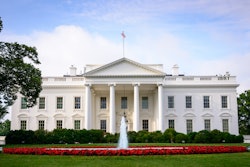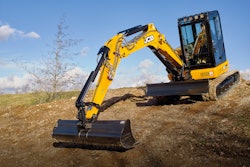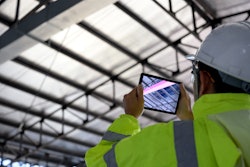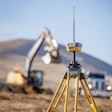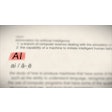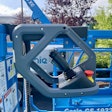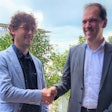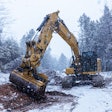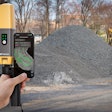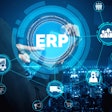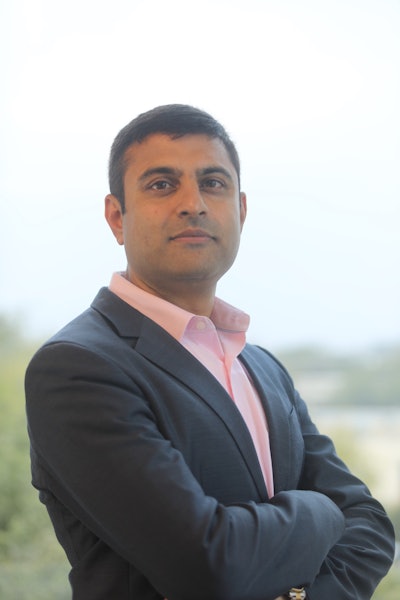
Balaji Sreenivasan, founder and CEO, Aurigo Software, details the top tech trends set to define the construction industry in 2025.
IRONPROS: Please provide an overview of Aurigo and its mission.
Balaji Sreenivasan: Aurigo builds software that helps build the world. With this core purpose in mind, Aurigo’s solutions address the complex challenges facing capital program managers and infrastructure owners, allowing them to efficiently handle the complexities of modern projects from initial planning through to long-term maintenance. Its flagship platform, Aurigo Masterworks, is designed to empower public agencies and facility owners to orchestrate projects with confidence, connecting stakeholders and securing their buy-in while strategically prioritizing investments for optimal results. By automating workflows and enabling AI-powered forecasting and data-driven decision-making, Aurigo helps to ensure that projects remain on schedule and within budget, creating transparent and sustainable value for all concerned parties.
Aurigo’s mission also reflects an ongoing commitment to driving positive impacts on communities, public services, and the environment. By optimizing resource use, minimizing waste, and fostering sustainable practices, Aurigo is focused not only on driving project efficiency but also on advancing the quality of infrastructure to benefit society as a whole. Aurigo is currently trusted by over 300 customers and used on 40,000 projects across sectors like transportation, water, healthcare, and government, handling over $300 billion in capital programs across North America.
IRONPROS: What new technologies are set to disrupt the construction industry in 2025?
Sreenivasan: In 2025, several technologies are set to reshape the construction industry by making operations more precise, efficient, and responsive. Artificial intelligence will play a significant role, transforming needs assessments and enabling unbiased project analysis based on data like demographics, finances, and historical trends. Through predictive analytics, AI can help assess project risks, allowing teams to make better decisions and avoid costly delays. Digital twins are also gaining traction, especially in large-scale capital programs. By creating digital replicas of physical assets, teams can simulate various scenarios to identify potential issues before construction begins, reducing rework and saving time.
Wearable technologies, such as smart glasses, are poised to streamline inspections by enabling workers to capture detailed site data hands-free and transmit it for real-time AI analysis. The Internet of Things (IoT) will further boost productivity by providing real-time updates on equipment and material usage, eliminating the guesswork and improving resource management. Meanwhile, as electric vehicles grow in popularity, construction projects are starting to include dedicated infrastructure like EV lanes and charging stations, which will require new planning and design considerations to support sustainable transportation.
IRONPROS: How can businesses and contractors benefit from these new technologies?
Sreenivasan: Businesses and contractors stand to benefit from these new technologies by gaining better accuracy, efficiency, and control over their projects. Real-time data from IoT sensors and wearable tech allows for timely adjustments, leading to smarter resource management and fewer delays. With AI-driven analytics, project managers can anticipate and mitigate risks, keeping budgets on track and schedules intact. This level of foresight enhances decision-making and contributes to more predictable project outcomes, which is especially valuable for capital-intensive construction.
Digital twins also allow project teams to explore design and operational scenarios before committing resources on-site. By catching potential issues early in a virtual environment, teams can avoid costly on-site rework and downtime. The shift toward electric infrastructure also aligns with long-term maintenance needs, as more sustainable designs are likely to reduce operational costs in the years to come. Together, these technologies streamline workflows, improve productivity, and help businesses deliver high-quality results more consistently.
IRONPROS: What traditional jobs, workflows, or processes will become obsolete due to new construction technology?
Sreenivasan: The adoption of advanced construction technology is changing the nature of several traditional roles and workflows, though it doesn’t necessarily make them obsolete. For example, the role of a construction inspector is evolving as wearable technology, and AI enable remote inspections and real-time data analysis. Instead of conducting physical site visits, inspectors can now rely on drones, sensors, and smart glasses to gather data from afar, allowing them to monitor multiple sites more efficiently. This shift requires inspectors to build new technical skills, moving away from solely physical inspections toward data interpretation and remote site management.
Similarly, traditional processes like manual stockpile tracking are being replaced by IoT-driven automation. IoT sensors provide accurate, real-time data on material usage, reducing the need for hands-on inventory checks. Software testing within project workflows is also shifting as automated testing scripts streamline quality control processes that previously relied on manual oversight. Rather than rendering roles unnecessary, these technological advancements highlight a growing need for upskilling as professionals adapt to tools and processes that redefine how construction projects are managed and executed.
IRONPROS: How will AI impact the construction industry in 2025? Please provide examples.
Sreenivasan: AI is set to make a significant impact on the construction industry in 2025 by automating and enhancing various aspects of project planning, design, and maintenance. For instance, AI-powered predictive maintenance can help reduce equipment downtime by analyzing usage patterns and identifying potential failures before they occur. This proactive approach to maintenance not only minimizes disruptions but also extends the life of valuable machinery, saving costs over time. Similarly, an AI-powered sentiment analysis tool can streamline feedback collection across construction, environmental, and community impact projects, thereby promoting community engagement. AI is also improving safety on job sites, with drones and sensors monitoring for hazards and alerting workers in real time to prevent accidents.
In project planning, AI assists with supply chain optimization by predicting material needs, optimizing delivery schedules, and managing inventory levels. Decision-making tools powered by AI provide data-driven recommendations, allowing project managers to make timely adjustments based on accurate, real-time insights. Additionally, AI can automate the creation of visual content—charts, reports, and presentations—helping teams communicate project status effectively with stakeholders. These examples highlight how AI can streamline operations, improve safety, and enhance project transparency, providing a stronger foundation for success in the construction sector.
IRONPROS: When it comes to adopting new construction technology, how can businesses get the most out of adoption and implementation?
Sreenivasan: To maximize the benefits of new construction technology, businesses should set clear goals for adoption, including specific requirements, timelines, and metrics to track success. Defining these parameters ensures that the technology is implemented with a focused purpose and can be evaluated for return on investment. A strong leadership structure also plays a crucial role; leaders need to champion the adoption process and foster a mindset that embraces change across the organization. Providing thorough training for team members is essential as well, equipping them with the knowledge and skills to utilize the technology fully and effectively.
Integration with existing systems is another important factor for a smooth transition, as well-aligned technology can save valuable time during implementation. By incorporating real-time data and analytics into project workflows, businesses can make better-informed decisions, streamline operations, and optimize performance. Consistent monitoring and adjustment based on feedback help ensure that new technology remains relevant and impactful, enabling companies to achieve long-term gains in productivity and efficiency.
IRONPROS: What can customers expect from Aurigo in 2025? (highlight new developments, upcoming releases, collaborations, projects, etc.)
Sreenivasan: In 2025, Aurigo plans to launch an AI-based interactive co-pilot platform designed to enhance productivity by providing faster access to information, automating repetitive tasks, and offering advanced analytical insights. This platform aims to address challenges that traditional software often cannot, making it easier for capital program managers to handle complex projects. Additionally, Aurigo Essentials, our out-of-the-box solution designed for local and regional government agencies, will receive new features, including AI-powered data insights, improved scheduling and budgeting tools, and enhanced real-time reporting capabilities. These updates will simplify project management, helping them achieve predictable outcomes in their infrastructure planning.
Aurigo will also be expanding its partnerships, such as its ongoing collaboration with Autodesk, which connects Masterworks with Autodesk’s design data, allowing seamless access to critical design information. Further collaborations with large engineering firms, like HNTB, and systems integrators like CGI will enhance customer support across various infrastructure projects. Meanwhile, Aurigo’s Bathydrone (a collaborative initiative with the University of Florida’s Department of Mechanical and Aerospace Engineering), equipped with advanced AI navigation software, will be improved for remote and autonomous underwater data collection, providing a faster and more efficient solution for infrastructure needs.


